Dr. Fakira Mohan Nahak
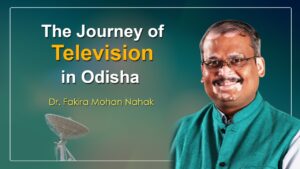
The Television news Industry in Odisha has gone through a progressive journey in the past two decades. In this series Dr. Fakira Mohan Nahak presents the media history blended with his close observation on the fast changing Industry.
It was a usual evening. The lantern which was bought just three days prior to my birth was the only source of light. Electricity connection at home was a distant dream. I was busy in the mandatory evening study hour. It was my fourth grade. While going through one of the poems in the literature book, came across a word “Kalamukura” whose meaning I was not aware of. When my Dad asked its meaning, I remained dumb and finally learnt from him that it literally means television. Till then I had only bookish knowledge of what a television is. Neither I nor any of my contemporaries in my village was fortunate or privileged enough to know what a television looks like in real. In my wildest fantasy I was thinking it to be a mirror and if someone stands in front it, it must be starting a conversation. That’s the beauty of childhood. You can imagine anything under the sun as you wish.

No household in my village had a television when I was in primary school. It doesn’t mean television was not available in Odisha market. Odisha had already become acquainted with television in the 1970s. When satellite Instructional Television Experiments were launched in six states of the country for the first time in 1975-76, Odisha was one of those states. With the introduction of colour transmission in 1982, watching the Delhi Asian Games on television was even more spectacular for the people. Doordarshan was the only government owned channel at that time. With the development of Doordarshan’s infrastructure in Odisha, the people of Odisha had the opportunity to watch the Oriya program for some time. It was the nineties when the news telecast got started. The first television channel in Oriya was launched in 1994 as DD-Oriya. Doordarshan was able to meet the needs of the Odia audience to some extent. Undoubtedly it provided bread and butter to numerous artists and producers of Odisha through various entertainment programs. OTV later started broadcasting Odia programmes in 1997 as a cable channel only in Bhubaneswar and Cuttack. Viewers from rest part of the state were not able to watch its programs.
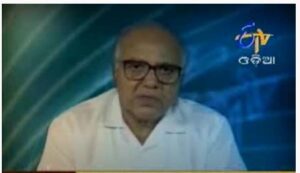
Odisha faced the biggest wrath of nature in 1999. Super cyclone completely devastated the costal part of the state. Nature’s worst ever fury led to the untimely death of thousands of lives. The economic backbone of the state was completely collapsed. The state, its people and the administration was in shambles.The entertainment and film industry was one of the worst hit sections. The Oriya film industry, being most popular in coastal Odisha suffered unprecedented losses. Most of the movie theatres were destroyed by the cyclone. The film studios were devastated. All India Radio and Doordarshan stations were also hit by the apocalypse. Many of the artists, technicians, filmmakers found it difficult to make both ends meet.
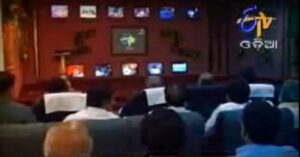
It was calm after the calamity. The public life was trying to get back to normalcy. The entertainment industry was on the path of recovery. In this hours of resurrection, the world of Odia television witnessed its best ever revolution. ETV Oriya,the first private satellite Oriya channel was launched on January 27, 2002 from Hyderabad by Ramoji Rao, a well-known South Indian filmmaker, editor, senior journalist and media entrepreneur. People of Odisha finally got the opportunity to watch a 24-hour television channel. It was truly a watershed moment in the history of Odia television.
It was the beginning of a new era. Along with the launch of ETV Oriya, five other regional channels of ETV were also launched simultaneously. These included ETV Gujarati, ETV Madhya Pradesh, ETV Rajasthan, ETV Uttar Pradesh and ETV Bihar. The launch of six channels at the same time is a rare event in the history of world television.
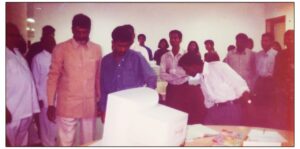
It’s been two decades. A lot of water has flowed under the bridge since then. But the memories are still fresh. The emotions are still overwhelming. While all the other channels were broadcasting speeches by RamojiRao, the chairman of Ramoji Group in their respective languages, ETV Oriya went on air with the visual of Chief Minister Naveen Patnaik lighting a lamp near Mahaprabhu Shree Jagannath, the identity of all Odias across the globe. After a minute, Bande Utkal Janani got aired. What a goose bump moment it was..! Emotions were at its peak. Every eye was moist with tears of sheer joy, happiness and pride. Silence was ruling the moment when Bande Utkal Janani was on air. Once it was over,there was complete euphoria and we congratulated each other for creating and witnessing the history in making.
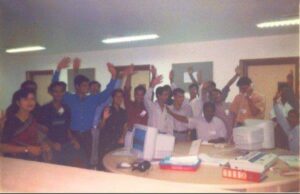
As they say Rome was not built in a day, the first domestic satellite channel of the Oriya language was born as a result of eight months of hard work, commitment, dedication and practice by a bunch of inexperienced yet energetic and enthusiastic young people.
(Dr. Fakira Mohan Nahak is a writer and former media professional. He is currently working as the Head of the Department of ‘University Institute of Media Studies’, Chandigarh University at Mohali, Punjab. Views are Personal)






















